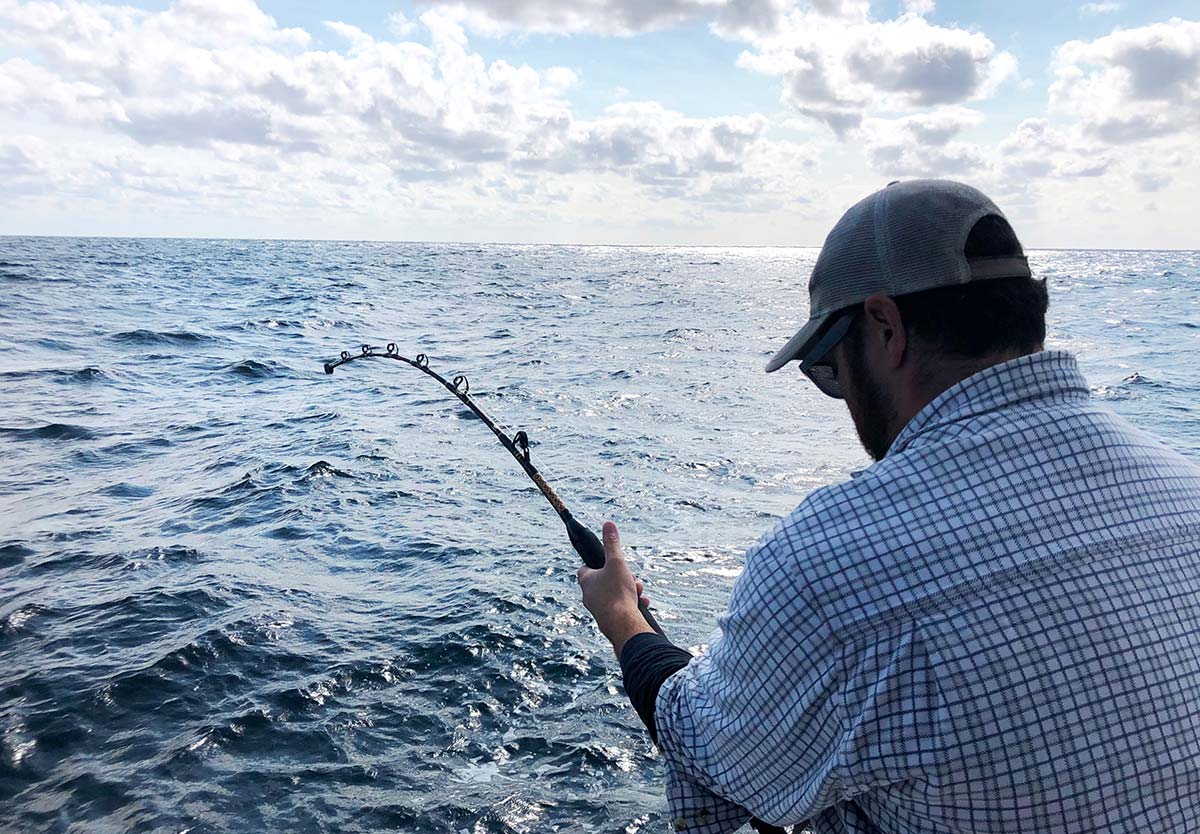Some thoughts on fighting big fish from small boats from a master of the craft.
I have spent the majority of my adult sportfishing life since age 24 (46-½ years ago) catching or tagging/releasing large coastal saltwater gamefish from small, seaworthy craft. My current ride is a 2006 EdgeWater 228 CC with a new Merc 250 on the transom, but historically I’ve owned and operated a half-dozen Grady-Whites from 23 to 26 feet, a 27 Phoenix, 23 SeaCraft and others in the same genre.
I have landed or released many hundreds of fish over 200 pounds, dozens over 300 and at least a dozen or more over 400 pounds from these modestly-sized craft. Just a few weeks back, my son Marc angled a 388 male thresher in one hour and 20 minutes on a relatively lightweight Penn VISX 20 outfit that we harvested for steaks. Back in 2017, my charter crew won the Oakland’s annual shark tournament with a 341 thresher that we took on a Penn VSX 16 outfit in only 1-1/2 hours. Since space is limited, allow me to summarize the ways that I approach the “big fish on small boat” process.
Minimize Weak Links
I always look to minimize tackle expenses and maximize availability and reliability whenever possible. This translates to making my own rigs from start to finish. If I need something, I make it myself. Trolling lures, daisy chains, spreader bars, shark leaders, wind-on leaders, mono topshots, bottom rigs, and swivel connection knots, whatever. I have spent 46 years embracing this concept and continue to roll my own today. The reason for this is more than economical; there are too many weak links in the chain that connects angler to fish and the only person I trust to get it done right is myself, especially if using light tackle.
Serious bluewater anglers should adopt the same approach and I can almost guarantee you that you will lose less fish. You can learn the art of tying various rigs just by looking at YouTube videos. Historically, becoming proficient in the “black arts” required many hours of hanging around tackle shops or mating on a boat where the captain showed you the righteous path. But now, the road to knowledge is as simple as dialing-in a YouTube video on your smart phone or tablet.

Using A Force Multiplier
Using the boat as a force multiplier is one of the secrets to my success. As soon as we hook up something that is large with a high energy level (like a big bluefin, mako, thresher, tiger, wahoo, billfish, etc.), it’s time to start the engine and chase down the fish. Never attempt to fight or land a large fish from a stationary boat; that’s a recipe for failure. Oftentimes your boat handling skills will be challenged as you play a game of leapfrog, trying to stay one step ahead of the fish. Rough seas make it even more stressful, where the smallest mistake or lapse of focus can be disastrous.
You can lead a fish by dragging it down sea and then double back in the troughs to recover line. You can corkscrew a large thresher or bluefin off the bottom by turning tight circles overhead to get them to follow the pressure. This is where a two-speed reel is an indispensable tool in the small boat/light tackle angler’s bag of tricks. When the fight is in its final stages, steer the boat into the waves to glide your quarry up to the surface for a quick and safe end game.
Trust The Process
You probably will not land that big fish the first time you see color. Be prepared for more than one unceremonious trip back down to the bottom where all the line you worked hard to recover is dumped back over the side. I have seen the mono topshot connection go on and off the rollers a dozen times or more before it was time for the end game. Be patient and trust the process. Put max pressure on the fish and believe that the equipment will hold up to the task. That once in a lifetime moment may be closer than you think.




